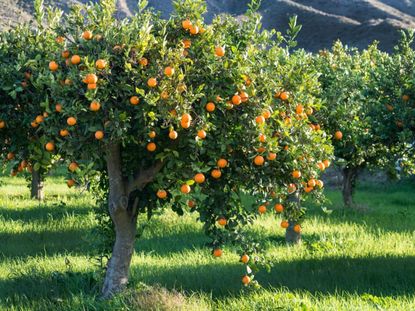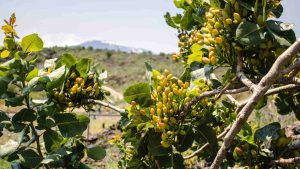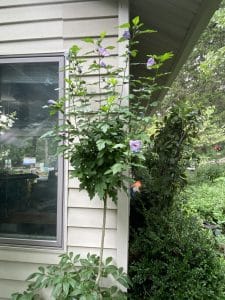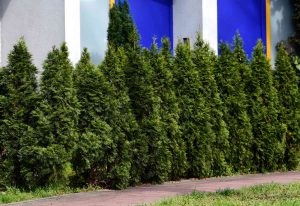Trimming orange trees is a necessary task for any citrus orchard owner or lover. Proper pruning not only keeps the tree healthy, but it also promotes maximum fruit output. In this comprehensive book, magnolia tree removal delves into the complexities of how to trim an orange tree and helps you master this horticultural skill.
Understanding the importance of trimming
Promoting growth and productivity
Trimming orange trees is critical for promoting healthy development and increasing fruit yield. By eliminating dead or diseased branches, the tree may be able to better transfer nutrients to healthy limbs and fruit. Furthermore, careful pruning promotes the production of new branches, which add to the tree’s overall vigor.
Increased air circulation and sunlight exposure
A well-trimmed orange tree has better air circulation and sunshine penetration across its canopy. This not only decreases the risk of fungal illnesses but also ensures that the fruit ripens uniformly. Adequate airflow inhibits moisture buildup, reducing mold and mildew growth on leaves and fruit. Trimming orange trees is both an art and a science, necessitating meticulous attention to detail and following best practices. In this section, we will go over the intricacies of cutting orange trees, from timing to precise procedures and safety measures.
When is the best time to trim orange tree
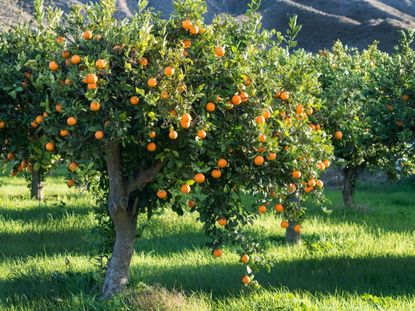
Timing is everything when it comes to pruning orange trees. The best time to trim orange trees is during their dormant season, which typically spans from late winter to early spring. Pruning during this time reduces stress on the tree, allowing it to devote more energy to new growth once the growing season begins. Avoid pruning during active growth seasons to avoid disrupting the tree’s natural processes and reducing fruit yield.
Tools required
- Pruning
- Shears
- Loppers
- Pruning saw
- Pole pruners
- Sanitize your tools
Safety Precautions
When cutting orange trees, safety should always be the number one priority. To reduce the chance of accidents and injuries, use these safety precautions:
Protect yourself from sharp branches and falling debris by using gloves, safety glasses, and strong footwear.
Use a sturdy ladder or platform, secured to stable ground, to safely access the upper branches.
When using pruning equipment, keep a safe distance from overhead power wires and other obstructions to avoid mishaps.
Never prune branches that are close to electrical wires or equipment. In such cases, call a professional arborist or a utility company for assistance.
To avoid weariness and keep your attention during pruning, take breaks when necessary.
How to trim an orange tree?
Thinning: How Much Should You Do?
Thinning is an important part of trimming orange trees, but knowing how much to thin can be a tricky balance.
Assessing branch density
Before you begin thinning, you must first examine your orange tree’s branch density. Overly dense canopies can reduce airflow and sunlight penetration, thereby increasing insect and disease susceptibility. Begin by determining the spacing between branches and finding any instances of overpopulation or congestion.
Targeting overcrowded areas
When trimming orange trees, focus on overloaded parts of the canopy. To promote the general health of the tree, remove any dead, diseased, or damaged branches first. Next, look for branches that are crossing or rubbing against each other, as these might provide entry routes for pests and diseases. Thin out any branches that are growing too close together in order to create a more open and well-ventilated canopy.
Maintaining Balance
While thinning is necessary for increased airflow and light penetration, it is critical to strike a balance between removing superfluous foliage and keeping the tree’s structure. Avoid over-thinning, since this can expose the tree to sunburn and significant fruit loss. Instead, aim for a gradual decline in branch density while ensuring a uniform distribution of foliage throughout the canopy.
Considering tree size and age
The quantity of thinning required varies according to the size and age of the orange tree. Because their structure is still developing, younger trees may require less thinning at first. In contrast, elder trees may benefit from more vigorous thinning to stimulate growth and sustain output. When evaluating the amount of thinning required, take into account the tree’s overall size and shape.
Monitoring Results
After thinning your orange tree, carefully examine the results to determine the effect on tree health and fruit production. Pay attention to how the tree responds to pruning, such as the appearance of new growth and fruit production. To reflect the tree’s growth patterns and performance over time, adjust your thinning procedures as needed.
Shaping: Determining the Right Amount
Assessing the canopy structure
Before designing your orange tree, carefully examine its canopy structure. Look for regions with excessive growth or imbalance, as well as branches that may be impeding ventilation or sunlight penetration. Consider the tree’s general shape and how it integrates into the surrounding environment.
Define the desired form
When molding orange trees, you must first specify the desired shape. Are you looking for a compact, rounded canopy, or do you prefer an open, spreading growth pattern? Imagine the tree’s final form, considering both aesthetic and practical aspects like fruit accessibility and ease of maintenance.
Balancing Growth with Fruit Production
When shaping your orange tree, aim to strike an appropriate balance between growth and fruit output. While it’s tempting to focus simply on fruit supply, excessive pruning might jeopardize the tree’s general health and viability. Strike a balance between vegetative growth and fruit-bearing capability to keep the tree productive while also ensuring long-term sustainability.
Gradual adjustments
When shaping orange trees, it’s typically better to make modest changes over time rather than trying to get the desired shape all at once. Begin by removing any evident blockages or congested branches, then take a step back to evaluate the tree’s response. Make more pruning cuts as needed, aiming for a balanced and harmonious canopy shape.
Monitoring growth patterns
After shaping your orange tree, regularly monitor its development patterns to maintain its ideal shape. Keep an eye out for signs of regrowth or imbalance, and make any necessary adjustments to maintain the tree’s shape and structure. Periodic maintenance pruning can help to maintain the intended shape and enhance long-term tree health.
Related Posts:
Heading Back: A Pruning Technique for Healthy Growth
Pruning branch tips is an important step in fostering branching and stimulating new growth in orange trees. By deliberately removing terminal buds, the tree redirects its energy to lateral buds, resulting in a thicker canopy and increased fruit output. This approach is especially useful for revitalizing overgrown trees while keeping their size and shape. Heading back can revive overgrown orange trees with sparse canopies and heavy vertical growth, promoting new growth and restoring canopy equilibrium. When practicing heading back, make clean cuts immediately above healthy buds or lateral branches to promote normal healing and reduce the risk of pests and illnesses. Regular maintenance pruning during the dormant season helps orange trees stay healthy and fruitful. Monitoring the tree’s response to pruning and making the required modifications will assure its continued growth and vigor while providing a plentiful supply of delicious oranges.
FAQS
How much should I prune my orange tree?
The ⅓ guideline proposes limiting branch removal to one-third of the total in a year. Furthermore, attempt to remove no more than 20% of the branches during each pruning session to avoid putting too much stress on the tree.
Should I remove any dead or diseased branches from my orange tree?
Yes, you must remove dead or diseased branches as soon as possible to ensure the general health of the tree. You should cut off dead branches as they serve no purpose, but you should also remove infected branches to prevent further damage.
How should I prune water sprouts and vertical shoots on my orange tree?
Shear water sprouts, also known as vertical shoots, close to the stem or branch. These branches are thick and green, and they grow upward from the tree’s bottom portions. Removing them conserves the tree’s structure and promotes healthy growth.
Can I clip branches that touch the ground?
Pruning branches near or touching the ground is necessary to prevent the accumulation of impurities and to create pathways for insects. However, maintaining a balance is critical because lower branches frequently produce high-quality fruit, and regrowing them might be difficult.
Conclusion
For guide on how to trim an orange tree, follow these suggestions to ensure the health and productivity of your orange trees. Do you need magnolia tree removal? Magnolia Tree Removal provides safe and efficient service. Contact us today for skilled tree removal services tailored to your specific requirements.

